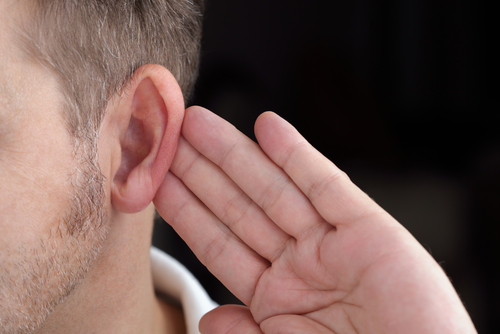The OSHA noise exposure standards says that if any employee’s exposure equals or exceeds an 8-hour time-weighted average of 85 decibels (dB), which is the “action level,” you must develop and implement a noise monitoring program.
 |
- The audiometric sampling strategy for the monitoring program should be designed to identify affected employees and enable proper selection of hearing protectors.
- Instruments used to measure employee noise exposure should be calibrated to ensure accurate measurement.
- When circumstances make area monitoring inappropriate, a representative personal sampling should be used to comply with the monitoring requirements.
- All continuous, intermittent, and impulsive sound levels from 80 to 130 dB should be integrated into the noise measurements.
Monitoring should be repeated whenever a change in production, process, equipment, or controls increases noise exposures to the extent that additional employees may be exposed at or above the action level or the protection provided by hearing protectors may be rendered inadequate to meet requirements.
The standard also requires you to provide affected employees (or their representatives) with an opportunity to observe any noise measurements and notify each employee of the results of the monitoring.
Think you have no time to train? Think again. BLR’s 7-Minute Safety Trainer helps you fulfill key OSHA-required training tasks in as little as 7 minutes. Try it at no cost and see!
Audiometric Testing Program
You must make continuous audiometric testing available to all employees whose exposures equal or exceed the action level. Audiometric tests must be performed by a licensed or certified audiologist, otolaryngologist (an ear, nose, and throat specialist), or other physician, or by a technician who is certified by the Council of Accreditation in Occupational
Hearing Conservation.
Noncertified technicians with appropriate experience may conduct tests under supervision of a certified tester. A technician who operates microprocessor audiometers does not need to be certified.
All audiograms must meet the requirements of 29 CFR 1910.95, Appendix C.
Baseline Audiogram
Within 6 months of an employee’s first exposure at or above the action level, you must establish a valid baseline audiogram against which subsequent audiograms can be compared.
- When mobile test vans are used to meet the audiometric testing obligation, you must obtain a valid baseline audiogram within 1 year of an employee’s first exposure at or above the action level.
- When baseline audiograms are obtained more than 6 months after the employee’s first exposure at or above the action level, employees must wear hearing protectors for any period exceeding 6 months after first exposure until the baseline audiogram is obtained.
Testing to establish a baseline audiogram must be preceded by at least 14 hours without exposure to workplace noise. Hearing protectors may be used as a substitute for the requirement that baseline audiograms be preceded by 14 hours without exposure to workplace noise.
Effective, 7-minute sessions providing comprehensive safety training at an average cost of $1 a day. Get the details.
Annual Audiogram
At least annually after obtaining the baseline audiogram, you must obtain a new audiogram for each employee exposed at or above the action level. Each employee’s annual audiogram must be compared with that employee’s baseline audiogram to determine if the audiogram is valid and if a standard threshold shift (STS) has occurred.
An audiologist, otolaryngologist, or physician must review problem audiograms and must determine whether there is a need for further evaluation. If a comparison of the annual audiogram with the baseline audiogram indicates an STS has occurred, the employee must be informed of this fact in writing within 21 days of the determination.
An annual audiogram may be substituted for the baseline audiogram when, in the judgment of the audiologist, otolaryngologist, or physician who is evaluating the audiogram:
- The STS revealed by the audiogram is persistent.
- The hearing threshold shown in the annual audiogram indicates significant improvement over the baseline audiogram
Audiometric Test Recordkeeping
You must maintain an accurate record of all employee exposure measurements and audiometric test records. Noise exposure measurement records must be retained for 2 years, and audiometric test records must be retained for the duration of the affected employee’s employment.
All records must be provided upon request to employees, former employees, representatives designated by the individual employee, and OSHA.
